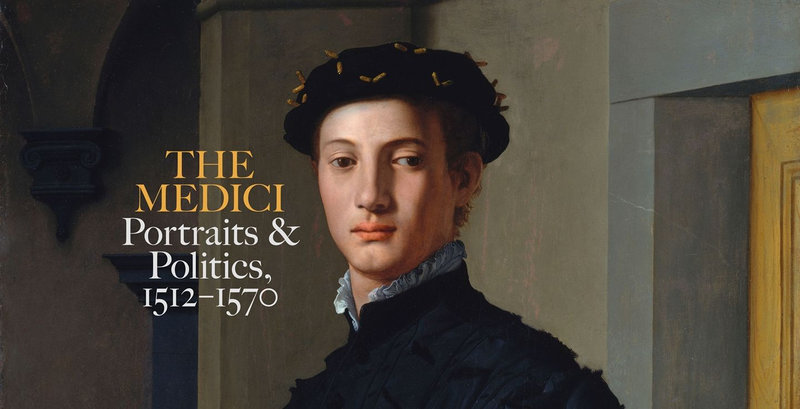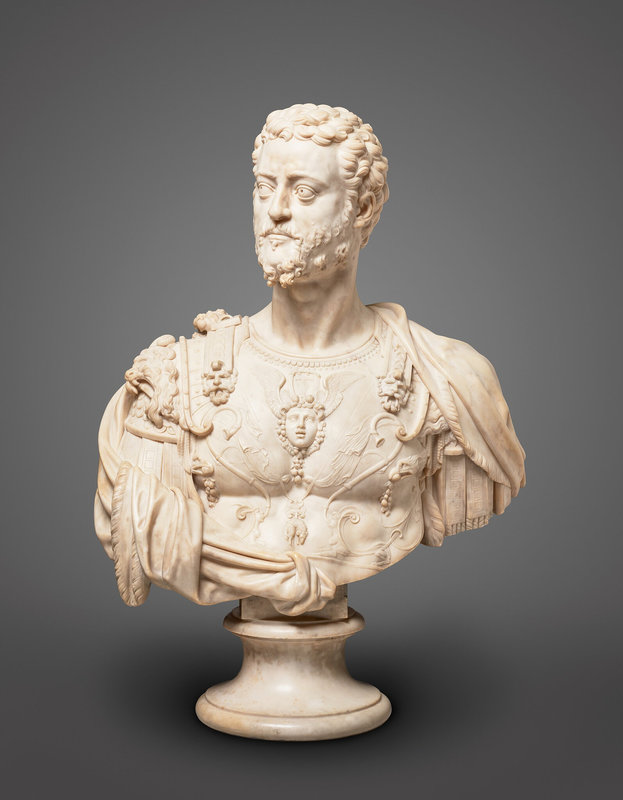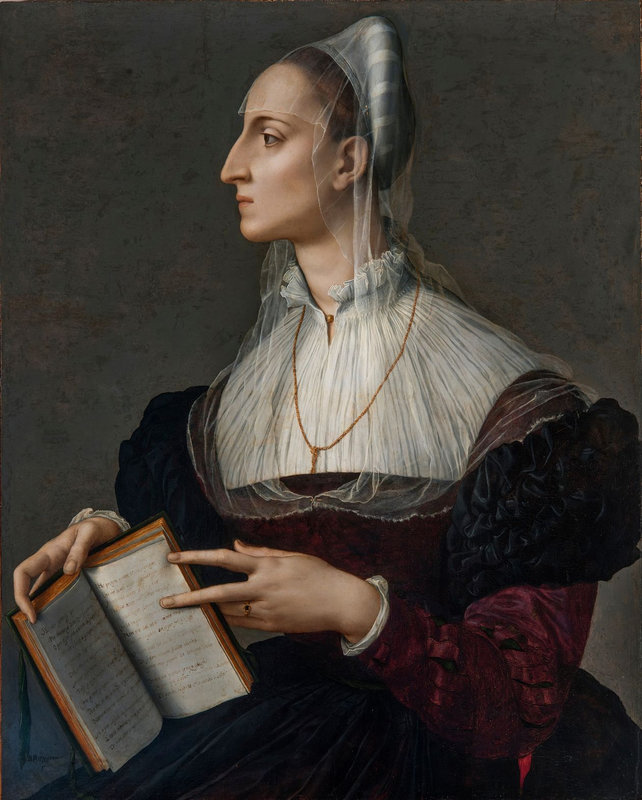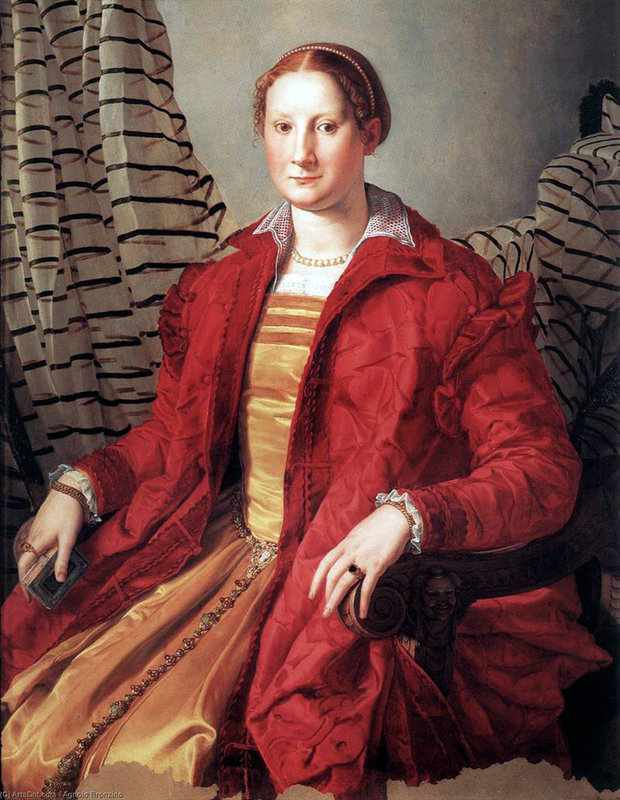Exhibition at The Met to Explore Politics, Patronage, and Power in Medicean Florence
Opening June 26, The Medici: Portraits and Politics, 1512–1570 will feature more than 90 works of art by some of the most celebrated artists of the Italian Renaissance, including Bronzino, Pontormo, Cellini, and many others
Some of the greatest portraits of Western art were painted in Florence during the tumultuous years from 1512 to 1570, when the city was transformed from a republic with elected officials into a duchy ruled by the Medici family. The key figure in this transformation was Cosimo I de’ Medici, who became Duke of Florence in 1537, following the assassination of his predecessor, Alessandro de’ Medici. Cosimo shrewdly employed culture as a political tool in order to convert the mercantile city into the capital of a dynastic Medicean state, enlisting the leading intellectuals and artists of his time and promoting grand architectural, engineering, and artistic projects. Opening June 26 at The Met, The Medici: Portraits and Politics, 1512–1570 will feature an outstanding group of portraits by renowned artists—from Raphael, Jacopo Pontormo, and Rosso Fiorentino to Benvenuto Cellini, Agnolo Bronzino, and Francesco Salviati—to introduce visitors to the various new and complex ways that artists portrayed the elite of Medicean Florence, representing the sitters’ political and cultural ambitions and conveying the changing sense of what it meant to be a Florentine at this defining moment in the city’s history.
Agnolo Bronzino (Agnolo di Cosimo di Mariano) Florence 1503–1572 Florence, Lodovico Capponi, 1550–55. Oil on panel, 45 7/8 x 33 3/4 in. (116.5 x 85.7 cm), The Frick Collection; Henry Clay Frick Bequest.
"Throughout history, art and imagery have been used to promote cultural and political agendas—a strategy that continues to be prevalent in our world today," said Max Hollein, Marina Kellen French Director of The Met. "This exhibition celebrates the achievements of the painters and sculptors responsible for these memorable masterpieces from Renaissance Italy, as it also explores the historical, social, and political context of these works, inviting us to more fully appreciate their artistic relevance and their role in culture and society. To be able to present extraordinary works by Raphael, Bronzino, Pontormo, Salviati, Cellini, and others from collections all around the world is not only a dream come true, but it is also especially remarkable given the various pandemic-related challenges we faced while organizing this international loan show."
This major exhibition will feature more than 90 works of art in a wide range of mediums, from paintings, sculptural busts, medals, and carved gemstones to drawings, etchings, manuscripts, and armor. By bringing together works from The Met’s holdings and collections throughout Europe, North America, and Australia, it will mark the most ambitious presentation of this material ever mounted in the United States.
Domenico Compagni, Cameo of Cosimo de’ Medici and Eleonora di Toledo, c. 1574. Image: Gabinetto Fotografico delle Gallerie degli Uffizi, su concessione del Ministero per i Beni e le Attività Culturali e per il turismo.
Exhibition Overview
The exhibition will unfold in six sections, each devoted to a defining moment or theme that will help illustrate the impact of Cosimo’s autocratic rule and cultural initiatives on Florentine artists and the sitters they portrayed. Upon entering the exhibition, visitors will be greeted by Benvenuto Cellini’s commanding, larger-than-life-size bust of Cosimo—among the greatest works of the Renaissance—from the Museo Nazionale del Bargello in Florence. Cleaning of the bust for the exhibition has recovered its silvered eyes, which emulate a practice found in ancient bronze sculpture. This masterwork will be shown with a marble version from the Fine Arts Museums of San Francisco—the first time that these two sculptures will be exhibited together.
The first section, “From Republic to Duchy, 1512–32,” will look at the years leading up to Alessandro de’ Medici becoming the First Duke of Florence. Most Florentine artists during this period practiced an austere style that reflected the traditional moral values of the republic. Portraits feature a somber color palette and absence of decorative embellishments, and details of objects serve to indicate a sitter’s profession. Following the traumatic siege of Florence by Spanish troops and the installment of Alessandro as duke in 1532, a shift in artistic style becomes evident, as will be seen in an extraordinary portrait of a woman by Agnolo Bronzino from the Städel Museum in Frankfurt.
Agnolo Bronzino, Portrait of a Lady in Red (Francesca Salviati?), circa 1533, oil on poplar wood, 89.8 x 70.5 x 2.6 cm, Städel Museum, Frankfurt.
Next, “The Medici Popes, 1513–32,” will introduce some of the key figures of the Medici dynasty—protagonists in a political game played from Rome, where members of the family held positions of power in the Catholic Church. Among the works here will be Raphael’s sumptuous portrait of Lorenzo de’ Medici, from a private collection, and Jacopo Pontormo’s intriguing portrait of Alessandro de’ Medici, lent by the Philadelphia Museum of Art. A subsection titled “The Last Republic and the Siege of Florence, 1527–30” will include Pontormo’s portrait (from the J. Paul Getty Museum) of a young halberdier ready to defend the Florentine Republic against the Imperial troops, along with several 16th-century weapons from The Met’s collection of arms and armor.
Jacopo Pontormo (active Florence, 1494 - 1556/7), Portrait of Alessandro de' Medici, Before December 1535, Oil on panel, 39 7/8 × 32 1/4 × 1 1/8 inches (101.3 × 81.9 × 2.8 cm), John G. Johnson Collection, 1917, © 2021 Philadelphia Museum of Art
Raphael, Portrait of Lorenzo di Medici, Duke of Urbino (1492-1519), circa 1516-1519, private collection.
Jacopo Pontormo, Portrait of a Halberdier, 529–1530. Oil (or oil and tempera) on panel transferred to canvas, 95.3 × 73 cm (37 1/2 × 28 3/4 in.), The J. Paul Getty Museum, Los Angeles.
At just 17 years of age, Cosimo succeeded Alessandro (who was assassinated by his cousin in 1537) as Duke of Florence and began consolidating power and laying the foundations for transforming the city into a Medicean court. The third section, “Cosimo I de’ Medici: Lineage and Dynasty,” will explore how the duke cultivated his image as the inheritor and preserver of the glory of the entire Medici line, weaving a connection to his illustrious relatives in various ways. Portraits of the ducal family were intended to project power, assert the continuity of the dynasty, and convey cultural refinement. Depictions of Cosimo will be joined by Bronzino’s compelling portraits of his children from the Galleria degli Uffizi in Florence and the Museo del Prado in Madrid, and his wife, Eleonora di Toledo, whose red velvet dress will be on loan from the Museo Nazionale di Palazzo Reale in Pisa.
Benvenuto Cellini, Bust of Cosimo I de' Medici, Duke of Florence, 1546-47. Image: Gabinetto Fotografico delle Gallerie degli Uffizi, su concessione del Ministero per i Beni e le Attività Culturali e per il turismo. Photo by Francesco Del Vecchio.
Benvenuto Cellini, Portrait Bust of Cosimo I de' Medici, Grand Duke of Tuscany, about 1550, Pentelic Marble, The Fine Arts Museums of San Francisco, Roscoe and Margaret Oakes Collection.
Cosimo harnessed the artistic and literary legacy of Florence to enhance the prestige of his court throughout Europe and, in 1542, he established an important literary institution called the Accademia Fiorentina. “A Poetics of Portraiture” will highlight the ways in which this literary culture, reaching back to Dante and Petrarch, shaped the conventions of portraiture in which sitters are often shown holding small volumes of poetry. Two such paintings from The Met’s collection—Bronzino’s Portrait of a Young Man with a Book and Salviati’s portrait of Carlo Rimbotti—served as this exhibition’s catalyst. Beyond indicating a sitter’s literacy, these small volumes signified the sitter’s patriotism, social affiliation, and partisan allegiance or dissent. A refined sense of allegory and metaphor also resulted in some of the most fascinating portraits in the Western canon—works in which the sitter is portrayed as a mythological or Biblical figure. Outstanding examples are Bronzino’s allegorical portraits of Cosimo as Orpheus, from the Philadelphia Museum of Art, and of his son Giovanni as Saint John the Baptist, which is from the Galleria Borghese in Rome and will cross the Atlantic for the first time.
Bronzino (Agnolo di Cosimo di Mariano) (Italian, Monticelli 1503–1572 Florence), Portrait of a Young Man With a Book, 1530s. Oil on wood, 37 5/8 x 29 1/2 in. (95.6 x 74.9 cm). H. O. Havemeyer Collection, Bequest of Mrs. H. O. Havemeyer, 1929 (29.100.16), The Metropolitan Museum of Art, New York.
Francesco Salviati (Francesco de' Rossi) (Italian, Florence 1510–1563 Rome), Carlo Rimbotti (1518–1591), 1548. Oil on wood, 20 3/4 × 16 3/8 in. (52.5 × 41.5 cm). Purchase, Walter and Leonore Annenberg Acquisitions Endowment Fund, Alejandro Santo Domingo, Ronald S. Lauder, and The Morris and Alma Schapiro Fund Gifts, and Beatrice Stern, Annette de la Renta, Brownstein Family Foundation, and David and Julie Tobey Gifts, 2017, The Metropolitan Museum of Art, New York.
Agnolo di Cosimo called Bronzino, Saint John The Baptist, 1560-61, oil on panel, 120 x 92 cm, Galleria Borghese, Rome.
Bronzino’s extraordinary portrait of the accomplished female poet Laura Battiferri will be displayed in a small gallery dedicated to “Cosimo and the Politics of Culture.” Lent from the Palazzo Vecchio in Florence, the work has been cleaned for the exhibition and will be exhibited together with a manuscript of the verses she exchanged with Bronzino, who was celebrated as both a painter and poet. Cosimo’s transformation of the city is commemorated in a series of medals, while his relentless efforts to assert Florence as the epicenter of the visual arts and the capital of the Italian Renaissance is evidenced in Giorgio Vasari’s famous Lives of the Artists, which was dedicated to Cosimo and for centuries imposed a Florence-centered narrative of Renaissance art. This astute propaganda campaign ensured that the reputation of Florence and the Medici would live on long after Cosimo’s death in 1574.
Agnolo Bronzino, Portrait of Laura Battiferri, c. 1560; Oil on panel, 83 x 60 cm; Palazzo Vecchio, Florence. Photo: Musei Civici Fiorentini-Museo Di Palazzo Vecchio.
The sixth and final section, “Florence and Rome: Bronzino and Salviati,” will offer a comparison between the two competing styles at Cosimo’s court: Bronzino’s insistently Florentine-based art and the pan-Italian style of Salviati. At Cosimo’s behest, the two artists worked concurrently in the Palazzo Vecchio—the seat of the old republic that the duke transformed into his residence—but his preference for a distinctively Florentine literary and artistic language led to Bronzino’s portraits becoming the official style of the ruling elite. This gallery will provide a unique opportunity to compare the qualities of these artists, both as painters and as draftsmen; to gauge their responses to each other’s work; and to sort out some long-debated attributions. The exhibition will conclude with the juxtaposition of two masterpieces, both portraits—a bronze by Cellini (from the Isabella Stewart Gardner Museum in Boston) and a painting by Salviati—of the Florentine banker Bindo Altoviti, who remained one of the most significant opponents to Cosimo’s rule.
Francesco Salviati, Bindo Altoviti, Private Collection; via The Metropolitan Museum of Art, New York.
The Medici: Portraits and Politics, 1512–1570 is organized by Keith Christiansen, the John Pope-Hennessy Chairman 1of the Department of European Paintings, and guest curator Carlo Falciani, Professor of Art History at the Accademia di Belle Arti in Florence.
The exhibition will be accompanied by a richly illustrated catalogue featuring contributions from leading scholars. Published by The Metropolitan Museum of Art and distributed by Yale University Press, it will be available to purchase from The Met Store.
June 26–October 11, 2021. The Met Fifth Avenue, Gallery 999, Iris and B. Gerald Cantor Exhibition Hall.
Agnolo Bronzino, Portrait of Pierantonio Bandini, 1550-55. Oil on wood, 107 x 83 cm, National Gallery of Canada, Ottawa.
Agnolo Bronzino, Portrait of a Lady (probably Cassandra Bandini), c. 1550. Oil on wood, 109 x 85 cm, Galleria Sabauda, Turin.
Bronzino (Agnolo di Cosimo di Mariano), (Italian, 1503–1572), Eleonora of Toledo and her son Francesco de Medicis, circa 1550, Collection Museo Nazionale di Palazzo Reale, Pisa.
Bronzino (Agnolo di Cosimo di Mariano), (Italian, 1503–1572), Portrait of Francesco I de' Medici, 1551, oil on panel, Galleria degli Uffizi, Florence.
Bronzino (Agnolo di Cosimo), García de' Medici, ca. 1550. Oil on panel © Museo Nacional del Prado, Madrid

/https%3A%2F%2Fprofilepics.canalblog.com%2Fprofilepics%2F1%2F0%2F100183.jpg)
/https%3A%2F%2Fstorage.canalblog.com%2F03%2F02%2F119589%2F96711876_o.jpg)
/https%3A%2F%2Fstorage.canalblog.com%2F11%2F31%2F119589%2F94773502_o.jpg)
/https%3A%2F%2Fstorage.canalblog.com%2F20%2F83%2F119589%2F94772815_o.jpg)
/https%3A%2F%2Fstorage.canalblog.com%2F26%2F72%2F119589%2F75604929_o.jpg)
/https%3A%2F%2Fstorage.canalblog.com%2F59%2F60%2F119589%2F26458628_o.jpg)





















/http%3A%2F%2Fstorage.canalblog.com%2F97%2F94%2F119589%2F93799021_o.jpg)
/http%3A%2F%2Fstorage.canalblog.com%2F58%2F13%2F119589%2F92925724_o.jpg)
/http%3A%2F%2Fstorage.canalblog.com%2F81%2F06%2F119589%2F121054415_o.jpg)
/image%2F1371349%2F20240426%2Fob_9bd94f_440340918-1658263111610368-58180761217.jpg)